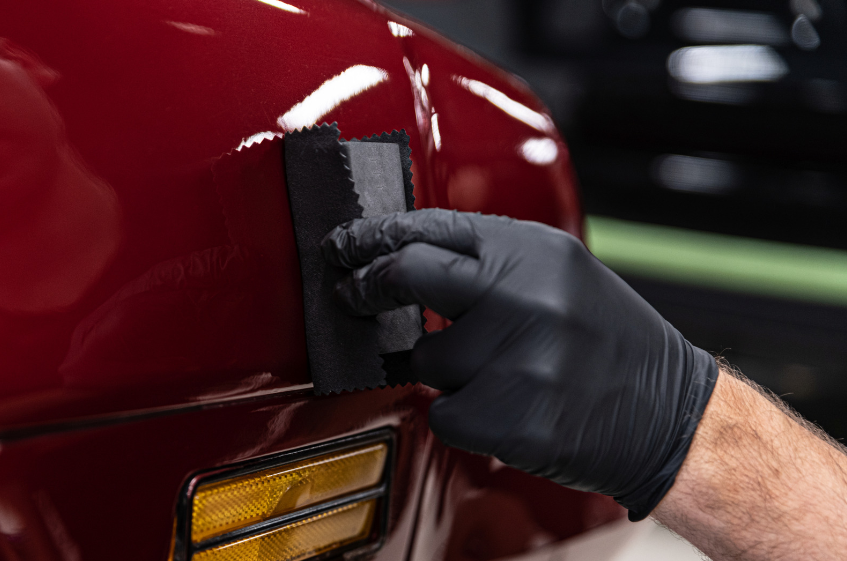Maintaining a vehicle’s appearance is crucial for both aesthetics and value retention. Among the numerous methods available, ceramic paint protection and traditional waxing are two of the most popular choices. This blog will explore these two paint protection techniques, examining their benefits, drawbacks, and overall effectiveness. By comparing ceramic paint protection to traditional waxing, we aim to help you decide which method best suits your needs.
Understanding Paint Protection
Paint protection serves the essential purpose of preserving the look and longevity of a vehicle’s paint. It acts as a shield against environmental elements such as UV rays, dirt, and road salts. Whether you choose ceramic paint protection or traditional waxing, the goal is to enhance your car’s durability and shine. Understanding these methods will help you make an informed decision on which paint protection solution is right for your vehicle.
What Is Ceramic Paint Protection?
Ceramic paint protection involves applying a liquid polymer to your vehicle’s paintwork. This polymer bonds with the paint at a molecular level, creating a durable, protective layer. The primary benefits of ceramic paint protection include its long-lasting nature, scratch resistance, and superior UV protection. This method is known for its ease of maintenance, as it requires less frequent cleaning compared to traditional waxing. However, ceramic paint protection comes with a higher upfront cost and usually requires professional application.
What Is Traditional Waxing?
Traditional waxing is a more conventional method of paint protection where a wax coating is applied to the vehicle’s paint surface. This coating enhances the paint’s gloss and provides a layer of protection against environmental factors. While traditional waxing is cost-effective and easy to apply, it falls short in terms of longevity. Wax typically needs to be reapplied every few months, and it offers less protection against scratches and UV rays compared to ceramic paint protection. Despite its drawbacks, traditional waxing remains a popular choice due to its affordability and simplicity.
Comparing Ceramic Paint Protection and Traditional Waxing
When comparing ceramic paint protection with traditional waxing, several factors come into play. Durability is a significant difference, as ceramic paint protection offers a much longer lifespan than traditional wax, which can wear off after a few months. Protection Level also varies, with ceramic paint protection providing superior resistance to scratches, UV rays, and chemical contaminants. In terms of maintenance, ceramic paint protection requires less frequent attention, whereas traditional waxing demands regular reapplication to maintain its effectiveness. Cost is another consideration, with ceramic paint protection typically requiring a higher initial investment but potentially saving money in the long run due to its durability. Finally, the application process for ceramic paint protection is generally more complex and may require professional installation, while traditional waxing can be easily applied by car owners themselves.
When to Choose Ceramic Paint Protection
Ceramic paint protection is ideal for those seeking long-term, robust protection for their vehicle. It is particularly well-suited for high-end or new cars where maintaining the paint’s pristine condition is a priority. If you live in an area with harsh environmental conditions or want to minimize maintenance, ceramic paint protection is the better choice. This method offers premium results and ensures your vehicle remains protected for years to come.
When to Choose Traditional Waxing
Traditional waxing might be the preferred option if you are working with an older vehicle or are on a budget. It is also suitable for DIY enthusiasts who enjoy performing their own car care. For those who want a cost-effective solution that enhances gloss and provides basic protection, traditional waxing is a practical choice. It’s an excellent method for regular upkeep and maintaining a shiny finish without a significant initial investment.
Takeaway
Ceramic paint protection and traditional waxing each offer distinct advantages and disadvantages. Ceramic paint protection stands out for its durability, advanced protection, and low maintenance, while traditional waxing remains a budget-friendly, easy-to-apply option. The best choice depends on your specific needs, budget, and how much time you’re willing to invest in maintenance. Evaluating these factors will help you decide which method of paint protection is most suitable for your vehicle.











